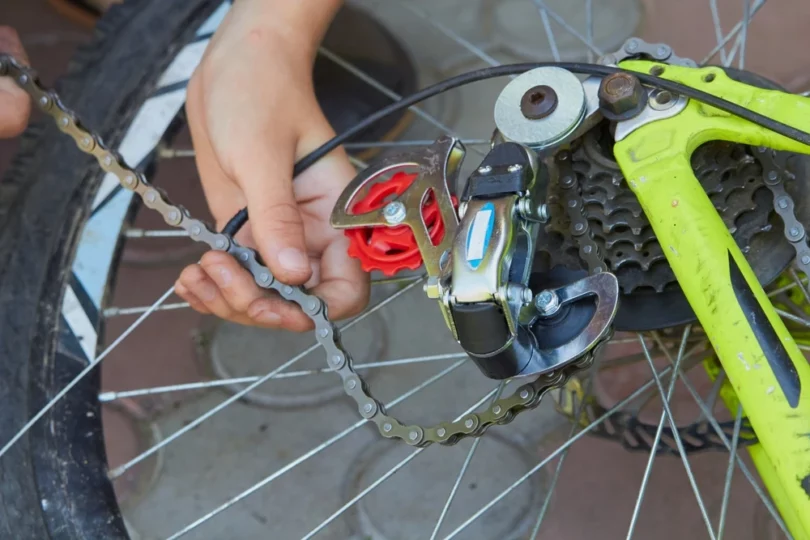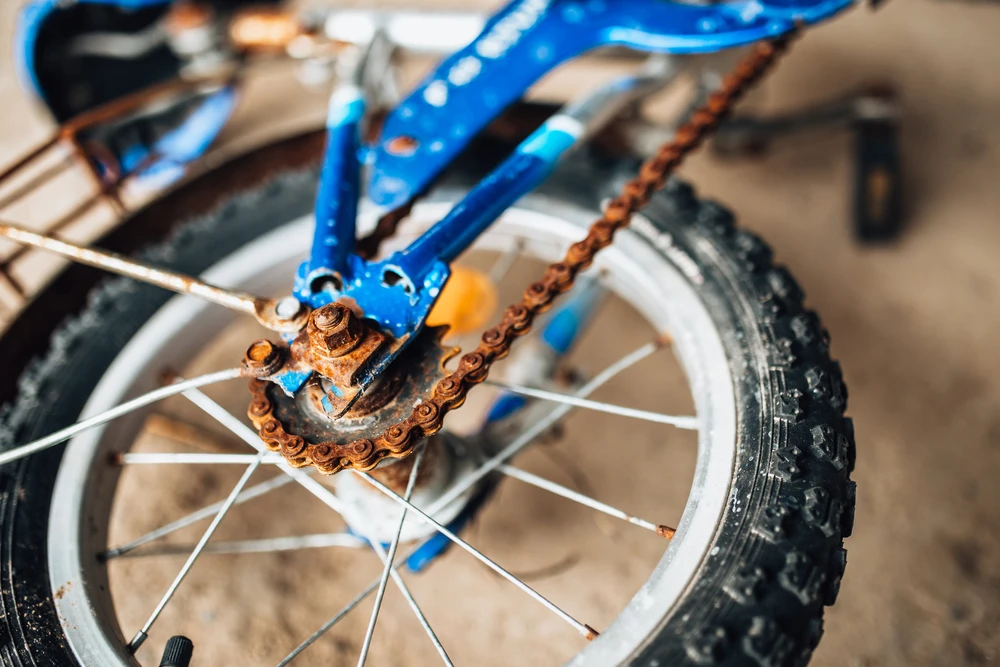We all understand the importance of a well-maintained bike but often take the chain for granted. This is a bad idea because you need to keep it in top shape for an efficient, safe, and smooth ride.
The lifespan of the chain mainly depends on its quality, your maintenance routine and riding frequency, and the road or weather conditions you usually ride in.
Here we will discuss how long a bike chain lasts and how to take good care of it.
How Long Does a Bike Chain Last?
This depends on several factors, such as your riding style, terrain and weather conditions, and maintenance practices. A bike chain can last between 1,500 to 2,500 miles on average.
However, with regular cleaning, lubrication, and proper care, you can extend its life to 3,000 miles or more.
Factors that Affect Bike Chain Lifespan
Riding Conditions
How you ride your bike affects how long the chain will last. Riding in wet or muddy conditions causes the chain to wear out faster. If you often ride in rough terrain or frequently shift gears while carrying heavy loads, the chain can deteriorate.
Maintenance Practices
You have to clean and lubricate your chain regularly to help extend its lifespan, reduce friction, prevent rust, and maintain optimal performance. You can use a degreaser and brush to clean the chain and then apply suitable bicycle chain lubricant.
Maintenance Intervals
Regularly maintaining the chain has many benefits. It depends on your riding style and conditions. You should clean and lubricate the chain every 100-200 miles or more frequently if you ride in adverse conditions. If you follow a maintenance schedule, you can find and fix any problems that become big issues.
How Often to Check Your Chain’s Condition?
You need to check the condition of your chain regularly to ensure optimal performance and prevent potential issues. How frequently you should perform these checks depends on factors like your riding frequency, conditions, and the type of maintenance you do. You should check your bike chain’s condition every 100-200 miles or every month.
During the inspection, check for signs of wear like a stretched chain, rust, or stiff links.
Also, pay attention to any unusual sounds while pedaling, they may indicate a worn chain. If you notice significant wear or problems, you should promptly replace the chain to avoid further damage.
Regularly cleaning your chain and applying lubricant can help extend its lifespan and maintain smooth operation. It’s very important to follow the manufacturer’s guidelines for this.
Signs of a Worn Out Chain That Needs Replacement
Chain Stretch
Over a period of time, a chain may become longer because of heavy usage. To determine if a chain has stretched, you can measure the distance between a specific number of links. If the measurement goes beyond the limit suggested by the manufacturer (typically around 12 1/16 inches or 30.6 cm for a new chain), it indicates considerable wear and indicates that a new chain is required.
Skipping or Slipping
When the chain begins to slide or lose traction on the gears, particularly when under strain or during intense pedaling, it might indicate a worn chain. As the chain stretches, it may not engage correctly with the teeth of the cassette or chainrings, leading to ineffective gear shifting and a decline in overall performance.
Chain Wear Indicator
Some bike shops or chain manufacturers offer chain wear indicators. These tools can help you determine if your bike chain has reached a certain level of wear. They work by indicating whether the chain has stretched beyond a specific point, typically 0.5% or 0.75% elongation.
Visual Inspection
Take a close look at the chain for any visible signs of wear or damage. Look for rust, corrosion, or bent or damaged links. If your bike chain exhibits any of these issues, it is time for a replacement.
Noise and Vibration
An old chain can make more noise when you pedal and you might feel more vibrations through the pedals. This can mean that the chain is not fitting well with the gears and is slipping or grinding.
Replacing the Chain
When it’s time to get a new chain, it’s usually best to also replace the cassette (rear gears) at the same time because a worn chain can make the cassette teeth wear down.
If you use a new chain with a worn cassette, it can result in poor shifting and make the chain wear out faster. Changing both parts ensures they work well together and makes your drivetrain last longer.
Most bike chains need replacing around every 1500 miles, even with regular maintenance and lubrication. However, mountain bikes often need chain replacements more frequently because mud, dirt, and debris speed up the wear.
When a chain gets stretched and worn, it can cause serious damage to the chainrings, cassette, rear derailleur, and pulley wheels. Fixing all this extra wear and tear can be quite expensive.
What Happens If You Don’t Replace a Worn Out Bike Chain?
Poor Shifting Performance
When the chain gets older, it becomes longer and creates more space between the links. This can cause problems when shifting gears. This makes it hard to switch smoothly between ratios.
You might experience resistance or skipping when you try to shift, which can make your bike ride in an unpredictable and frustrating way.
Increased Drivetrain Wear
When a chain is not in its best condition, it places additional stress on the other parts of your bike’s drivetrain, such as the cassette (rear gears) and chainrings (front gears).
If you continue to ride with a broken chain, you can expect these components to experience premature wear and damage.
As a result, you need to replace them sooner than anticipated, and these replacements can be more costly compared to simply replacing the worn-out chain in a timely manner.
Chain Failure
If the chain is very old, it might break while you’re riding and make you lose control of the bike. Which could cause an accident. It can also damage other parts of the bike like the derailleur or rear wheel spokes.
Reduced Efficiency
An aged chain transfers power less effectively than a properly functioning one. The increased length between the links can result in energy loss and make pedaling less efficient.
You may find it more challenging to maintain speed or notice a decline in overall performance.
Expensive Repairs
If you don’t replace a worn-out chain, it can cause more serious damage to the gears and other parts that help you ride your bike smoothly. Replacing a chain costs less than replacing a chainring, cassette, or derailleur. Delaying chain replacement can lead to higher repair costs later.
To prevent these issues, make sure to check your bike chain regularly for signs of wear and replace it when necessary. You can measure chain wear using a chain wear gauge or by examining the links for elongation and signs of wear.
By regularly maintaining and replacing the chain, you can extend the lifespan of your bike’s drivetrain. This will result in smoother gear shifting, improved performance, and a longer-lasting drivetrain overall.
Conclusion
How long does a bike chain last? As you can see, if you pay attention to your chain’s condition and follow a maintenance routine, you can enjoy smoother rides and avoid unexpected chain-related issues.
Remember, when in doubt, consult your bike manufacturer’s recommendations or seek advice from a professional bike mechanic for specific guidance regarding your bike’s chain maintenance and replacement.
Happy biking!








